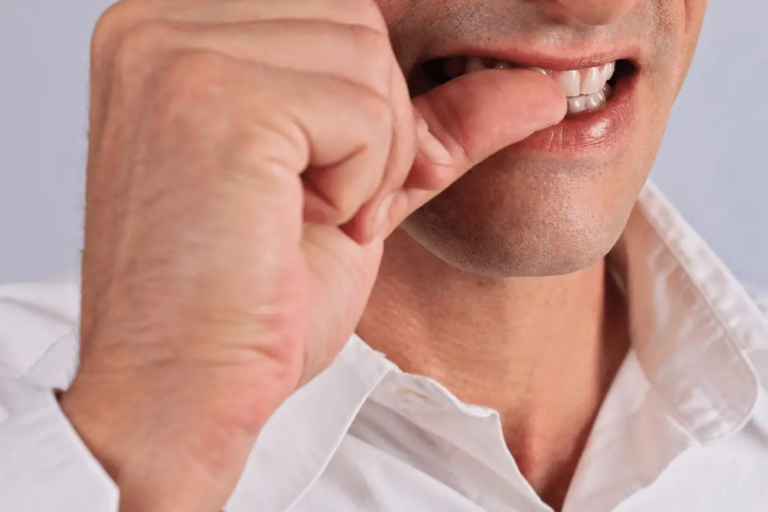Did you know that approximately 40% of individuals will experience vertigo at least once in their lifetime? Vertigo, characterized by a spinning sensation, dizziness, loss of balance, and nausea, can be debilitating and significantly impact daily life. Fortunately, Dr. Carol Foster, a renowned expert in vertigo treatment, has developed a simple yet powerful technique called the Half Somersault Maneuver. This groundbreaking maneuver has gained immense popularity for its effectiveness in providing rapid relief from vertigo symptoms. In this article, we will explore the Half Somersault Maneuver, and its targeted symptoms, and provide you with the necessary tools to regain control over your life.
Recent research conducted by the Department of Otolaryngology-Head and Neck Surgery at The Johns Hopkins University in Baltimore, MD, USA, in collaboration with the Department of Surgery at Princess Nourah University in Riyadh, Saudi Arabia, has uncovered an alarming statistic about the relationship between vertigo and sleep. A study published in the Journal of Vestibular Research by Albathi and Agrawal in 2017, titled “Vestibular vertigo is associated with abnormal sleep duration,” revealed that thirty percent of individuals with vestibular vertigo reported experiencing abnormal sleep duration. This study used data from the National Health Interview Survey and included a sample of 20,950 adults (PMID: 29064831, doi: 10.3233/VES-170617).
The Half Somersault Maneuver for Vertigo Relief:
Dr. Carol Foster’s Half Somersault Maneuver is a technique that can alleviate vertigo symptoms quickly and easily. Follow the step-by-step guide below to master this maneuver:
- Tip your head up to look at the ceiling: Begin by tilting your head upwards, directing your gaze towards the ceiling. This starting position sets the foundation for the subsequent steps.
- Assume the upside-down position: Transition into an upside-down stance, mimicking the position you would take before performing a somersault. This posture is crucial for the maneuver’s effectiveness.
- Turn to face your left elbow: While maintaining the upside-down position, rotate your body to face your left elbow. Allow any dizziness to subside before proceeding.
- Raise your head to back level: Slowly raise your head back to a level position, ensuring that it remains straight. Take a moment to wait for any residual dizziness to dissipate.
- Sit back quickly: Once the dizziness subsides, swiftly sit back up, returning to an upright position.

Dr. Carol Foster: The Vertigo Relief Expert:
Dr. Carol Foster is a distinguished figure in the field of vertigo treatment. With her extensive knowledge and experience, she has dedicated her career to helping individuals find relief from vertigo symptoms. The Half Somersault Maneuver, developed by Dr. Foster, has transformed the lives of numerous vertigo sufferers. Her expertise and guidance provide reassurance and hope to those affected by vertigo.
Understanding Vertigo Symptoms:
Vertigo symptoms can be distressing and disrupt daily life. They may include:
- Dizziness: Feeling lightheaded or unsteady.
- Spinning sensation: A perception of objects or the surrounding environment spinning.
- Loss of balance: Difficulty maintaining equilibrium, leading to stumbling or falls.
- Nausea: Feeling queasy or experiencing the urge to vomit.
If you experience any of these symptoms, it’s essential to address them promptly. Dr. Carol Foster’s Half Somersault Maneuver offers a viable solution for managing vertigo symptoms effectively.
Causes, Diagnosis, and Treatment:
Vertigo can be caused by various factors, including inner ear infections, inflammation, certain medications, head injuries, or migraines. Although uncommon, it can also be a possible sign of underlying disorders such as stroke, brain tumors, multiple sclerosis, or cardiovascular disease.
One common cause of vertigo is benign paroxysmal positional vertigo (BPPV), which occurs when the crystals within the inner ear become displaced, irritating the hair cells in the semicircular canals. The exact cause of BPPV often remains unknown.
Meniere’s disease is another condition associated with vertigo. It is characterized by spontaneous episodes of vertigo, fluctuating hearing loss, ringing in the ears (tinnitus), and sometimes a feeling of fullness or pressure in the affected ear. The cause of Meniere’s disease is not yet fully understood. Although vertigo symptoms often resolve spontaneously over time, treatment options such as physical therapy, medication, and in some cases, surgery can help manage the condition. While there is no known cure for Meniere’s, lifestyle changes like limiting caffeine and alcohol intake and certain medications can provide symptom relief.
Seeking Medical Attention:
If you experience unexplained dizziness, it’s important to consult your physician. Your family or internal medicine doctor may be able to diagnose and treat the underlying cause of your vertigo, or they may refer you to a specialist such as an otolaryngologist (ear, nose, and throat specialist) or a neurologist.
Although dizziness typically doesn’t indicate a serious illness, it’s crucial to seek immediate medical attention if you experience dizziness or vertigo along with any of the following symptoms:
- New, different, or severe headaches
- Fever
- Double vision or loss of vision
- Hearing loss
- Trouble speaking
- Weakness in your legs or arms
- Loss of consciousness
- Falling or difficulty walking

My Personal RX: Natural Remedies for Vertigo
In addition to the Half Somersault Maneuver developed by Dr. Carol Foster, there are several natural remedies that can help alleviate vertigo symptoms. Here are three effective options to consider:
- Ginger: Ginger has anti-inflammatory properties that can help reduce vertigo symptoms. It can be consumed in the form of ginger tea or taken as a supplement.
- Ginkgo biloba: Ginkgo biloba is an herb that has been used traditionally to improve blood circulation and reduce dizziness associated with vertigo. It can be taken as a supplement.
- Peppermint: Peppermint has a calming effect on the nervous system and can help alleviate vertigo symptoms. It can be consumed as peppermint tea or applied topically in the form of peppermint oil.
- Sleeping position matters: Sleeping on your back may keep fluid from building up and may prevent calcium crystals from moving where they don’t belong. Sleeping on your side, especially with the “bad” ear down, can trigger a vertigo attack. It’s important to prioritize healthy sleep habits. I recommend taking my Sleep Max, a scientifically formulated supplement, that offers a blend of natural ingredients that promote relaxation and support a restful night’s sleep.
- Additionally, I invite you to download my free sleep guide, which provides valuable tips and techniques to enhance your sleep hygiene. By implementing these recommendations, such as using Sleep Max and following the guidance outlined in the sleep guide, you can take proactive steps towards achieving better sleep and improving your overall well-being.
While these natural remedies may provide relief for some individuals, it’s important to remember that every person is unique. What works for one person may not work for another. It’s always a good idea to consult with your healthcare provider before starting any new natural remedy or supplement to ensure it is safe for you and won’t interfere with any existing medications or medical conditions.





















